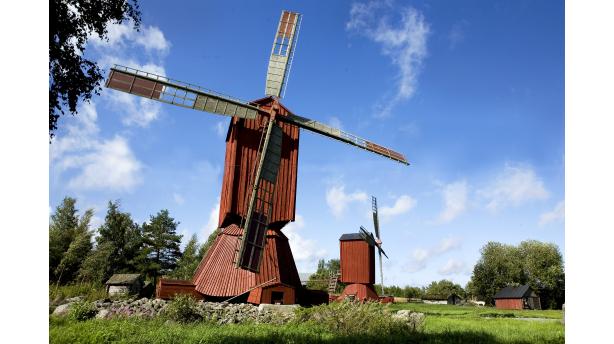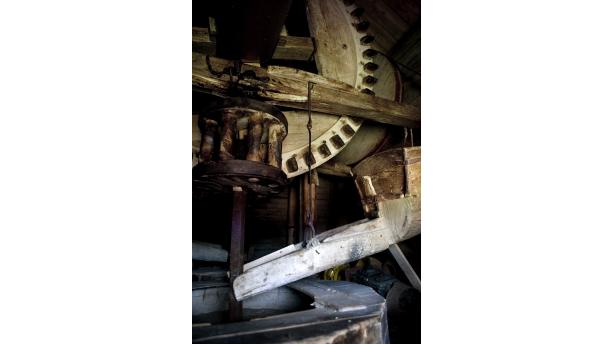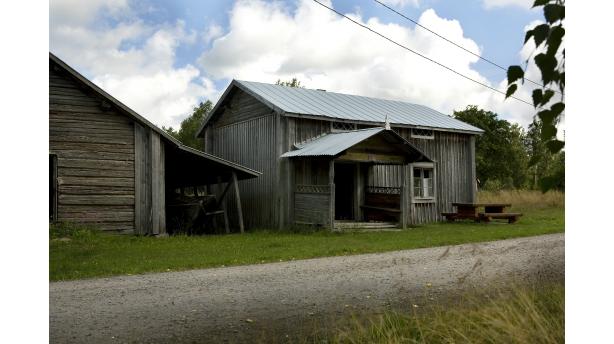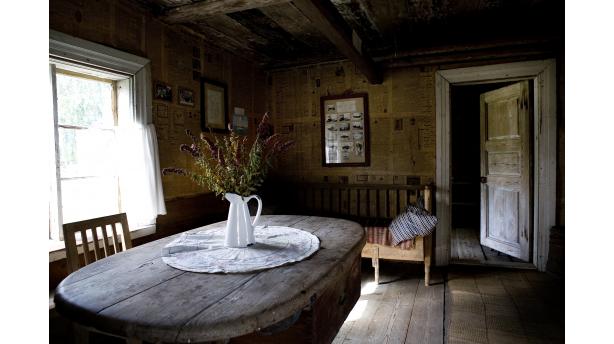A boatful of people made in 1959 two seal hunting trips and caught altogether 125 seals. The boat was used 15 times for seal hunting trips. The seal was in the 1970s an endangered species due to earlier massive hunting and environmental toxins.
Museum A-Ö » Special museum » Harrström Windmill Hill and Fishing Museum
Harrström Windmill Hill and Fishing Museum




Did you know...
A boatful of people made in 1959 two seal hunting trips and caught altogether 125 seals. The boat was used 15 times for seal hunting trips. The seal was in the 1970s an endangered species due ...
Two windmills stand on the Kvarnbacken hill as monuments to past centuries and bygone peasant community. Storkvarnen, the big mill, is one of the largest windmills in Finland. The museum also includes a furnished fisher’s cottage and a boathouse with its fishing equipment and instruments.
In the old days going to the mill ended the long period of farming, that started with the spring sowing. The harvested grain was ground into flour in the mill, and was later used for baking bread. In the Harrström village up to 10 or 15 mills could grind grain on windy days. Two of them still survive today.Storkvarnen, the big mill, was built in the 1840s, and it still stands on its original site by the sea and its fresh winds. The mill was built by Isak, Karl and Johan Ingels. The wings of the mill are 19,5 metres long and the mill stretches up to 22 metres measured from the ground to the upper tip of the wing. Storkvarnen is the largest functioning mill in Finland. The smaller mill of Kvarnbacken was built at the end of the 19th century. The mills have been restored, and they both function. There were originally five mills on the hill and twelve minor mills in the whole village. The mills of Kvarnbacken are activated every year during the summer festivities, and they grind flour.
The ground of the mill is a large tree trunk, which together with big logs and stones functions as the foundation. There is also a loft, a barn, a hut and a smoke sauna on the Kvarnbacken hill.
In addition the museum area contains an old fisher’s cottage and a boathouse, which are situated in a 300 metres long natural harbour at the feet of Kvarnbacken. The fisher’s cottage has been furnished in a way typical for a fisherman’s home in the late 19th century and early 20th century. The cottage is one of the oldest houses in the village, dating back to 18th century, but it was transported to the harbour in the 1970s. Photographs illustrate seal hunting and seal boats. Displayed in the boathouse are a seal boat, some fishing boats and a few boat engines. Fykes of the local population, the huge salt dishes and nets equipped with bark floats represent the fishing culture of the region.
The newly built (in the spring of 2013) museum boathouse displays fishing culture in the archipelago as well as old fishing equipment. The building has been adapted for the disabled, and also functions as a meeting and celebration venue.
There is also a museum bridge in Harrström, which is located on the historic coast highway of the Gulf of Bothnia. The current bridge was completed in 1898.



